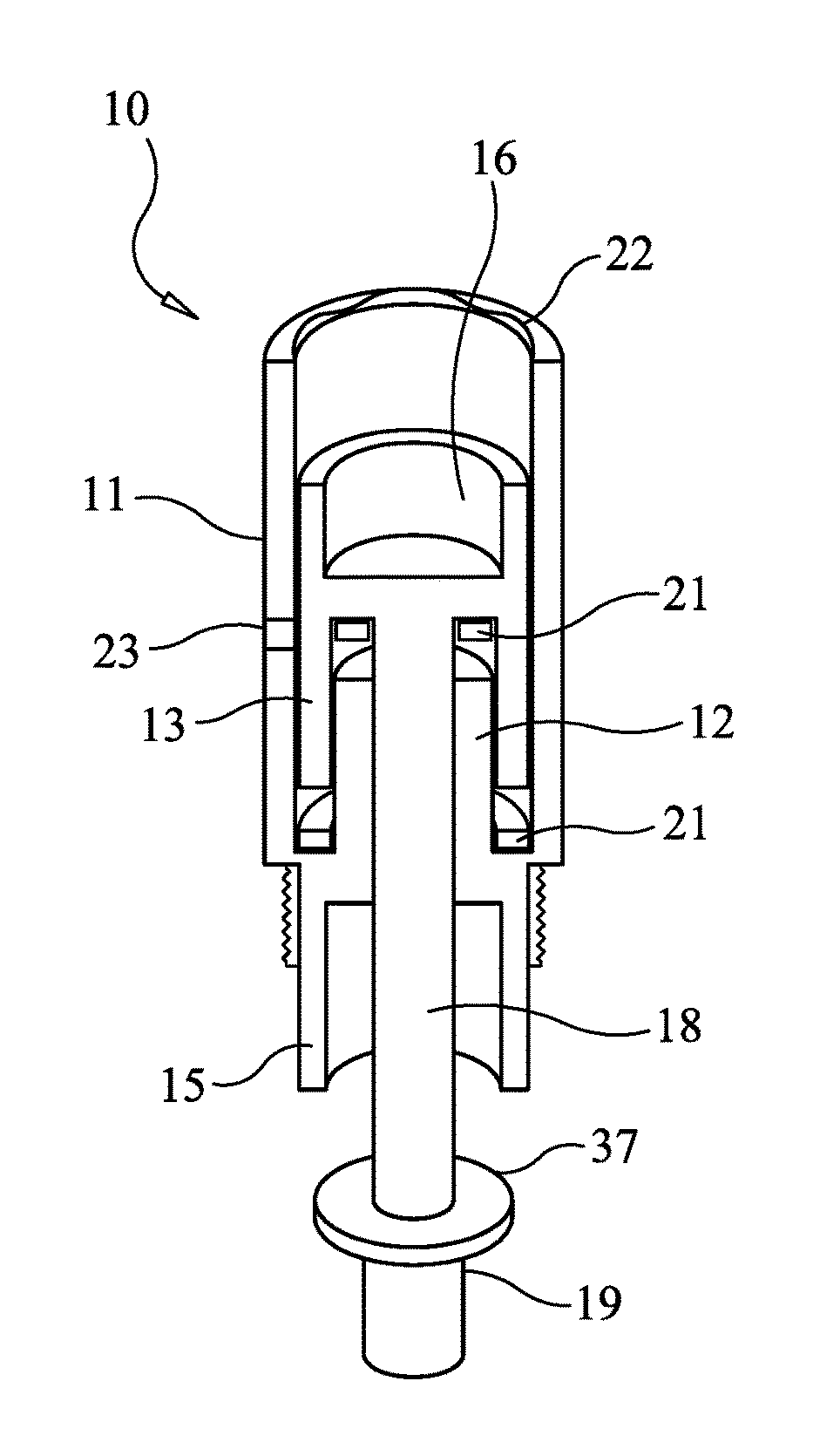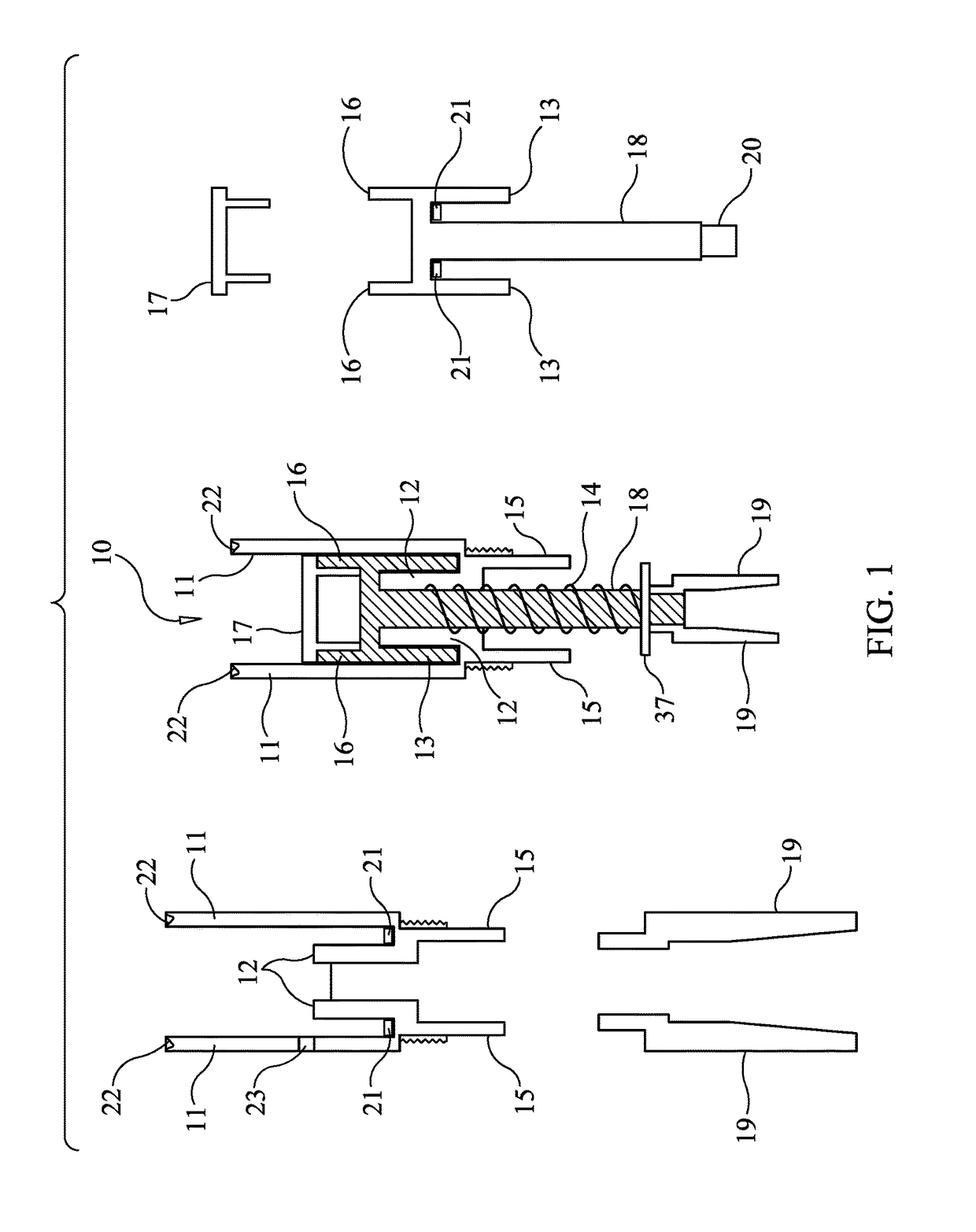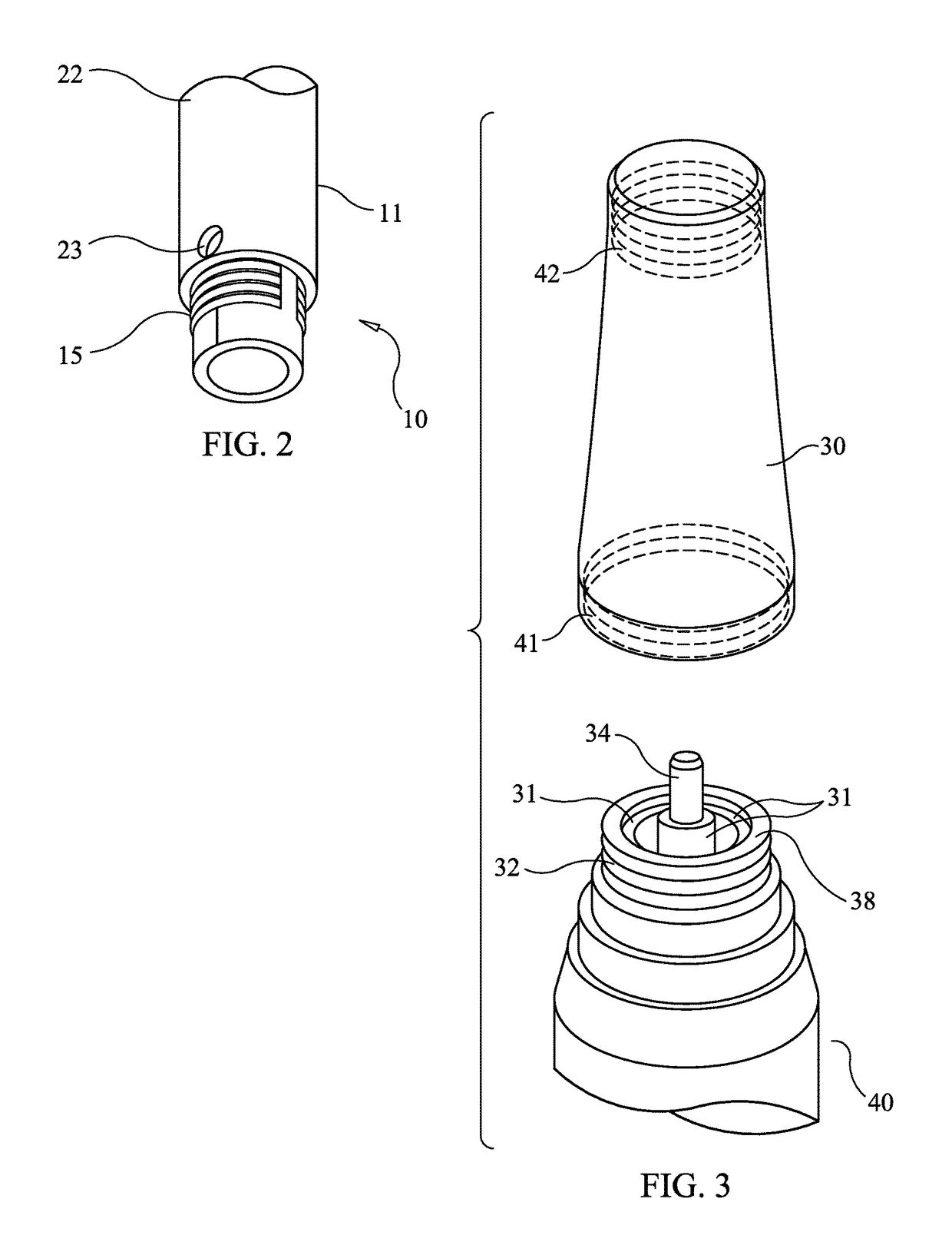Microneedle cartridge and nosecone assembly
a technology of nosecone and microneedle, which is applied in the direction of microneedles, infusion needles, other medical devices, etc., can solve the problems of no other microneedle cartridges incorporating the use of absorbent materials, and current motorized microneedling devices are not capable of preventing fluids from exiting, so as to achieve convenient use, safe use of stiff metal, and adequate connection
- Summary
- Abstract
- Description
- Claims
- Application Information
AI Technical Summary
Benefits of technology
Problems solved by technology
Method used
Image
Examples
Embodiment Construction
[0030]FIG. 6 illustrates the general configuration of a microneedling pen or microneedling device adapted to employ the present invention. Microneedling device body 40 contains a power source, an electric motor moving a high speed reciprocating piston, and speed and depth controls. Microneedling cartridge 10 comprises an embodiment of the present invention. Nosecone 30 joins the device body 40 and the cartridge 10.
[0031]FIG. 1 is a schematic diagram illustrating the components and assembly of the microneedle cartridge apparatus 10 designed to prevent the transmission of bodily fluids in accordance with one embodiment of the present invention. The central figure shows the cartridge apparatus, with some of the components broken out and repeated on the left and right figures. Microneedle cartridge apparatus 10 includes outer cartridge cylinder 11, which provides support and isolation for internal components. Attached to, and contiguous with outer cartridge cylinder 11 is inner baffle c...
PUM
 Login to View More
Login to View More Abstract
Description
Claims
Application Information
 Login to View More
Login to View More - R&D
- Intellectual Property
- Life Sciences
- Materials
- Tech Scout
- Unparalleled Data Quality
- Higher Quality Content
- 60% Fewer Hallucinations
Browse by: Latest US Patents, China's latest patents, Technical Efficacy Thesaurus, Application Domain, Technology Topic, Popular Technical Reports.
© 2025 PatSnap. All rights reserved.Legal|Privacy policy|Modern Slavery Act Transparency Statement|Sitemap|About US| Contact US: help@patsnap.com



